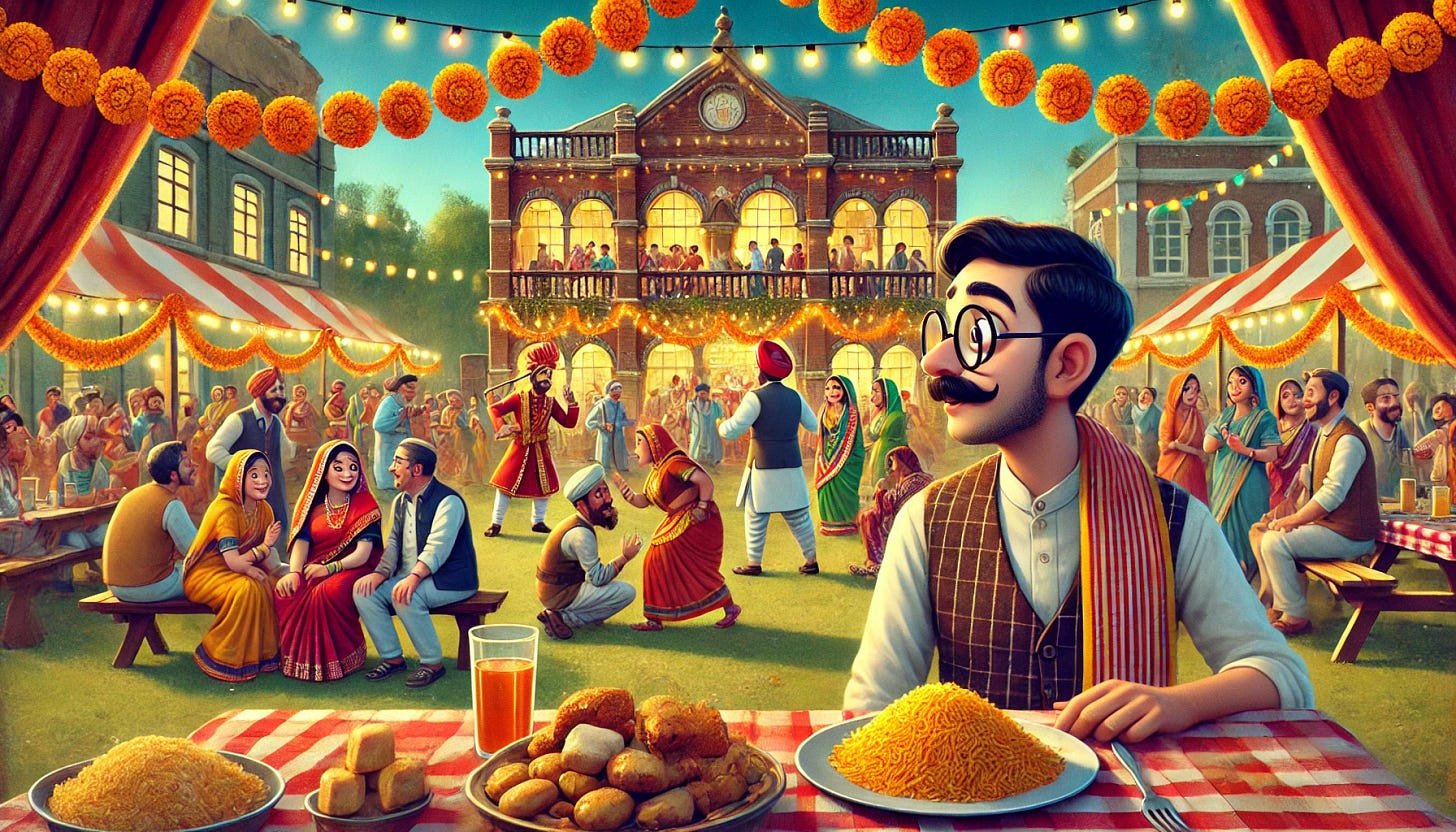North Indian Wedding 101: My First Experience
Exploring Food, Fun, and Traditions at My Friend's Delhi Wedding
Last week, I attended the wedding of a college friend in Delhi. The groom (my friend) is Bengali, while the bride is half Sikh and half Jatt. This made it my first North Indian wedding experience. Having mostly attended Bengali weddings, along with a few Marwari and one Mangalorean wedding, this was an entirely different cultural affair for me. Here’s my ordinary analysis of the event.
A Tug-of-War to Start the Day
I reached the hotel-like resort around 1:20 PM, missing most of the morning’s rituals. By then, the day’s highlight—a tug-of-war—was about to begin, with the bride’s side competing against the groom’s side. This was something entirely new for me. Bengali weddings (and most others I’ve attended) don’t usually include such playful events. But it seems to be catching on, especially when guests from both sides are staying in the same venue.
It was a best-of-three match, and the bride’s side emerged victorious, 2-1. Of course, they cheated—so said the groom’s side. Regardless, it was fun.
Lunch: The Veg Voyage
Now, I’m not the best food critic, and reviewing vegetarian food is an even harder task for me. Still, I have to admit the lineup was impressive. The dishes were served in iconic North Indian pairings: Makki di Roti and Sarson da Saag, Amritsari Chole and Kulcha, Rajma and Chawal, and so on. Everything was freshly made, with some items cooked live.
I sampled a bit of Kadi Chawal, Rumali Roti, and Soya Chaap before moving on to what I wanted to focus on—desserts. The standout was moong dal ka halwa, a treat I rarely get in South India. Naturally, I couldn’t resist indulging.
The Barat: A Slow-Moving Parade
The evening began with the Barat, the traditional groom’s parade. Two band members, armed with drums, led the way. In a distinctly North Indian tradition, they stopped the procession periodically, calling out relatives from the groom’s side to step forward, dance a little, and pay some cash. It started with the father, then it moved to the mother, sister, uncles and aunts.
This custom doesn’t exist in Bengali weddings, so the groom’s relatives—visibly confused—grew impatient when things slowed down a bit. “Why aren’t we moving?” they wondered aloud. Even though, the venue was just 300 meters away! The groom was also getting impatient - my friend was dying to get married.
In the midst of this chaos, one of the groom’s relatives stepped forward, clearly signalling, “I got this.” He handed the band two ₹100 notes. Suffice to say, the band members were underwhelmed.
When we finally reached the venue, another unique custom awaited us. The men from the bride’s side greeted the men from the groom’s side with garlands—a gesture I hadn’t seen at other weddings, where typically only the groom gets such attention.
Dinner: Non-Veg Heaven
Once inside, the hospitality was exceptional. A team of 10-15 staff in red ties acted like high-level managers, ensuring guests’ needs were met, often by directing others.
The dinner spread was incredible, especially for non-veg lovers like me. Live counters served kebabs, chicken dishes, mutton curries, and even an open bar! I indulged in two G&Ts while chatting with the groom’s friends.
For starters, I tried almost everything—chicken kebabs, a variety of mutton starters, and a fish dish. By the time dinner properly began, I was nearly full. Still, I managed some Chicken Biryani and Mutton Curry, rounding things off with desserts: rasmalai, rosogolla, and—you guessed it— moong dal ka halwa.
The Ceremony and Reflections
After 1.5 hours of rituals, the couple exchanged garlands (varmala) and posed for pictures.
This wedding made me think about my college friendships. My college life was like fuzzy clustering: I had a core group but was loosely associated with 3-4 others. I was the only college friend invited to this wedding. This isn’t uncommon among my batchmates. We rarely invite our college classmates to weddings—not just me, but almost everyone seems to be left out. It’s as if most of us have drifted so far apart that inviting each other doesn’t even cross our minds. I’ve noticed this pattern with a few classmates who got married earlier—hardly anyone from our batch was invited, which seems to be the norm now.
Maybe it’s a unique property of a second-tier Indian engineering college based in Salt Lake, Kolkata. Or maybe it’s something else. Whatever the reason, it feels a bit disappointing that even after spending four years together, you don’t have many (or in most cases, any) friends you can invite from your college life. And it’s only been six years since we passed out. In another four, we might not even remember each other’s names.
Is that how college camaraderie evolves? It feels like the line from 3 Idiots rings truer with each passing year: "The last day of college life will be a day when you'll be seeing most of your friends for the last time." The realization feels strange—it’s fascinating how close we once were, yet surprising to see how quickly life takes us in different directions.
That said, I did a quick count of wedding invitations I might still receive from college friends in the near future. The number stands at five for now—not bad for someone who sucks at networking!
So, that’s my recap of my first North Indian wedding.
What about you? Have you attended a wedding recently that was completely different from what you're used to? I’d love to hear about your experiences—drop a comment or share this post with someone who enjoys reading about weddings and cultural quirks!





Wonderful light-hearted read! It's a great mix of personal anecdote with machine learning technique plug-in and bollywood reference 👌